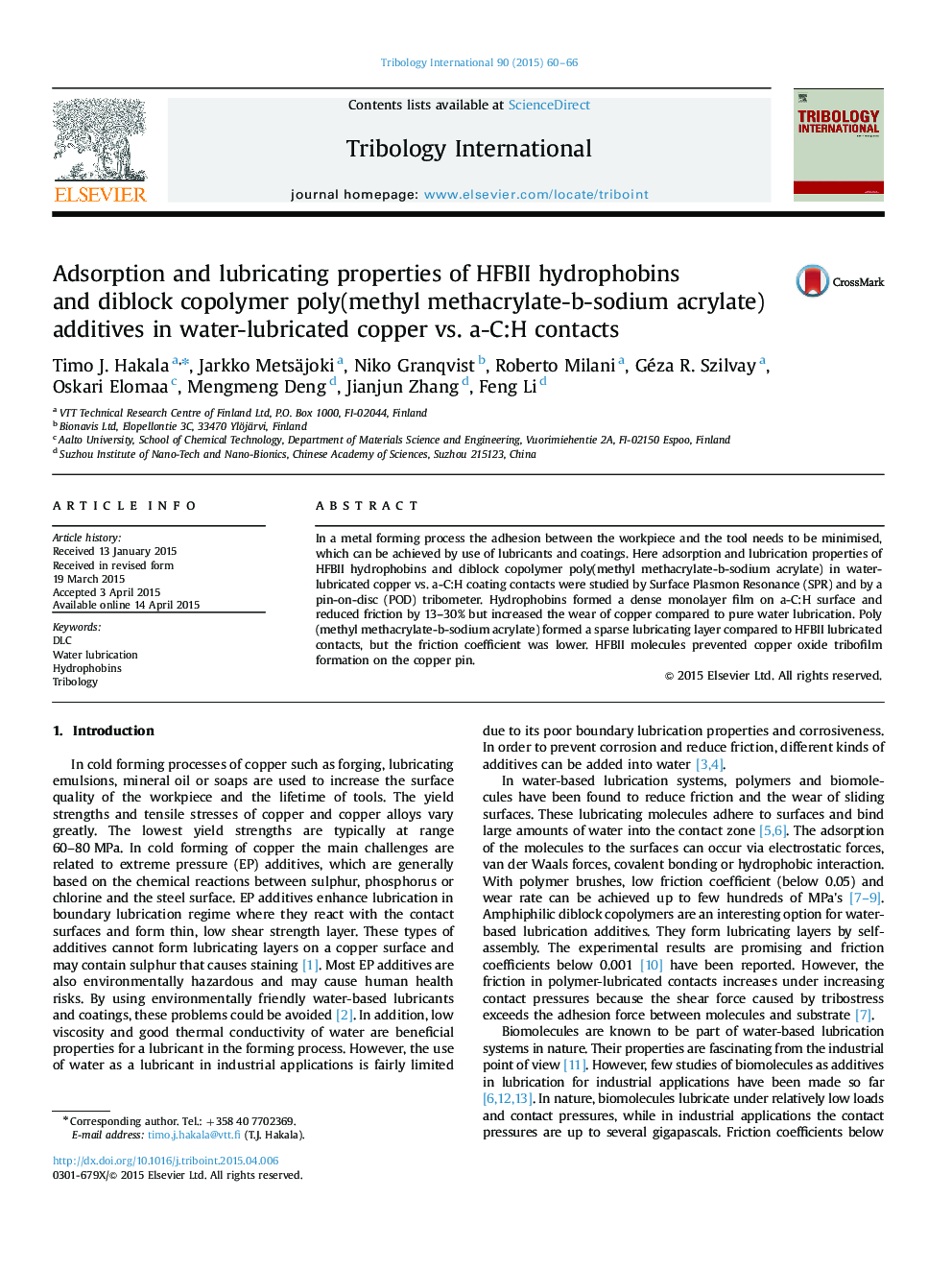| Article ID | Journal | Published Year | Pages | File Type |
|---|---|---|---|---|
| 7003011 | Tribology International | 2015 | 7 Pages |
Abstract
In a metal forming process the adhesion between the workpiece and the tool needs to be minimised, which can be achieved by use of lubricants and coatings. Here adsorption and lubrication properties of HFBII hydrophobins and diblock copolymer poly(methyl methacrylate-b-sodium acrylate) in water-lubricated copper vs. a-C:H coating contacts were studied by Surface Plasmon Resonance (SPR) and by a pin-on-disc (POD) tribometer. Hydrophobins formed a dense monolayer film on a-C:H surface and reduced friction by 13-30% but increased the wear of copper compared to pure water lubrication. Poly(methyl methacrylate-b-sodium acrylate) formed a sparse lubricating layer compared to HFBII lubricated contacts, but the friction coefficient was lower. HFBII molecules prevented copper oxide tribofilm formation on the copper pin.
Related Topics
Physical Sciences and Engineering
Chemical Engineering
Colloid and Surface Chemistry
Authors
Timo J. Hakala, Jarkko Metsäjoki, Niko Granqvist, Roberto Milani, Géza R. Szilvay, Oskari Elomaa, Mengmeng Deng, Jianjun Zhang, Feng Li,
